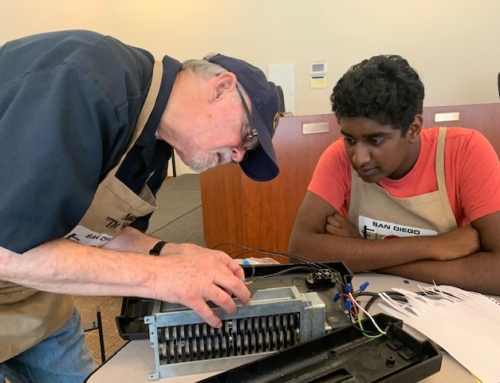Article by Laura Schumacher
Within the white towers of La Jolla’s Salk Institute, world-renowned plant geneticist Dr. Joanne Chory and her small team of research biologists are trying to save the planet with plants.
It makes sense. We all learned about the role of plants in photosynthesis back in elementary school. Plants use sunlight to turn carbon dioxide (CO2) into sugars the cell can use as energy. When the plant dies, it releases carbon dioxide back into the atmosphere. Plants are really good at photosynthesis – they’ve been doing it for 500 million years.
The earth today has too much CO2 in the atmosphere from human activity. Dr. Chory thinks it’s scientifically possible to get plants to absorb more CO2 and bury it deep in the ground instead of releasing it back into the atmosphere. Plants make a product called suberin which absorbs CO2. To solve climate change, Dr. Chory’s team is creating plants with larger and deeper root systems that produce more suberin to sequester carbon.

If this process can be perfected in crop plants such as corn, wheat and rice, Dr. Chory is convinced plants could help solve climate change. The next challenge will be to convince farmers to plant and grow these modified plants.
In April 2019, The Salk Institute received a TED Audacious Project grant of $35 million to scale up Dr. Chory’s research. Dr. Chory will be working on her “one last big experiment” here in San Diego with a sense of urgency. She has Parkinson’s disease and wants to accomplish as much as she can while she’s feeling good. And like all of us, she wants to leave the Earth better for her grandkids.
To learn more, watch Dr. Chory’s TED Talk here:



